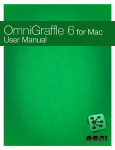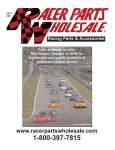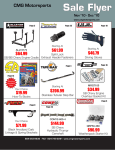Download Matchless Amplifier C-30 Instruction manual
Transcript
MATCHLESS MUSICAL INSTRUMENT AMPLIFIER For All C-30 models INTRODUCTION Thank you for choosing a MATCHLESS brand instrument amplifier. Your amplifier has been carefully hand-crafted using only quality materials. The chassis of your amplifier is completely hand wired employing construction techniques of military electronics manufacturers. We utilize point to point wiring instead of a printed circuit or bread board. The wiring is silver coated stranded copper in a Teflon jacket for extra resistance to heat and decay. We use mica filled phenolic tube sockets that are shock mounted to a rugged welded steel chassis. Our hand wired paper bobbin transformers are designed for 100% duty cycle. Vacuum tubes are selected for tone, low noise and performance. This kind of craftsmanship and attention to detail enables us to offer to the purchaser our six year guarantee. MATCHLESS amplifiers are ruggedly built, and aside from the periodic tube or indicator lamp replacement, should require very little maintenance. We have designed every MATCHLESS product to be a trouble-free, roadworthy, studio quality amplifier. FEATURES Your MATCHLESS is a straight forward amplifier devoid of bells and whistles. It is an all tube design including the power supply rectifier. Cathode bias operation is utilized for the output stage. The top-boost channel uses two 12AX7’s tubes in the first preamplifier, while the 6 position vari-tone channel uses an EF/86-6267 pentode tube. This configuration offers a unique tonal difference between the two channels. All C-30 amplifiers incorporate a MASTER volume control feature and a HI-LO power setting switch enabling the artist to take full advantage of the harmonic rich nature of an all vacuum tube design. MATCHLESS amplifiers are available in a variety of configurations. An effects loop is available as an option for most amplifiers. MATCHLESS amplifiers may be ordered as single, dual or quad combos as well as separate head and cabinet configurations. Speaker cabinets are available for use with rack mount amplifiers or as auxiliary cabinets for all combo amplifiers and amplifier heads. Cabinets can also be ordered with custom impedance ratings; this is especially useful when multiple speaker systems are used. OPERATION: GENERAL Your MATCHLESS is an all tube design. If your experience is limited with regard to vacuum tube instruments amplifiers, you should become familiar with the characteristics that differentiate vacuum tube designs from their solid-state counterparts… Aside from the tone or sonic performance. 1. Vacuum tube amplifiers require a “warm up” period of up to one minute before they become operational, and they usually sound better as they “cook”. This is due to the fact that electrons only flow when the cathode of a tube if fully heated. This is also the reason vacuum tube amplifiers run so much hotter than solid-state design. 2. Many vacuum tube amplifiers incorporate a STAND-BY switch, which aside from muting the amplifier, performs a more valuable function of removing current from the circuit while allowing the heaters to remain energized. The STAND-BY mode is used during short breaks and is usually preferred to turning the amplifier off. This allows the amplifier to cool and greatly enhances the useful life of the output tubes. NOTE: MATCHLESS amplifiers are biased hot and should not be allowed to idle with no input signal or long periods of time. 3. Tube type amplifiers are inherently sensitive to speaker impedance matching. This is due to the relationship of the internal resistance’s of the output transformer, the output tubes, and the load they are required to drive. A load imbalance can cause loss of power, self-oscillation, or excessive current to flow in the output stage. In severe cases this condition can cause the output transformer to run hot and may damage and destroy the output tubes. This kind of damage is not covered by the warranty. The impedance switch, located at the rear of the chassis, is used to match the amplifier to the speaker load. This rotary switch has three positions and can match the amplifier to four, eight, or sixteen ohm loads. This switch should be set before the amplifier is turned on. MATCHLESS single and four-ten cabinets are normally eight ohms. Dual speaker models are normally four ohms. When it is desired to use additional speakers with an amplifier, or multiple speakers with an amp head, it is necessary to calculate the proper impedance setting. This is easily accomplished using a simple ohm’s law formula: FORMULA: Load 1 x Load 2 _______________ Load 1 + Load 2 EXAMPLE: 8 Ohms x 8 Ohms ________________ = 4 ohms 8 Ohms + 8 Ohms The correct setting for two 8 ohm cabinets connected in parallel should be the four ohm setting at the amplifier. It is also possible to connect speaker systems of unequal impedance values using the same formula, simply set the impedance switch to the value closest to the result. Remember that volume output may be also be unequal, as the lower impedance speaker is likely to be slightly louder because it demands most of the power from the amplifier. Also, be sure that the power handling capacity is adequate. POWER SOAK DEVICES The use of “power-soak” devices is not recommended on your amplifier. These devices can severely shorten the life of the output tubes which should be replaced as a matched quartet. Replacing vacuum tubes can be quite expensive. If however one of these devices is an integral part of your sound, choose one that is well designed and built by a reputable company. When the amplifier starts to sound dull, it’s time to replace the output tubes. Always replace tubes with premium quality tubes only! Cheap tubes will not sound good and will not last. MATCHLESS sell replacement tubes for all models. Please contact your dealer or call the factory. SWITCHES AND INDICATORS POWER: OFF/ON This switch supplies power from the A.C. mains and is used to turn the amplifier off and on as well as the switched A.C. outlet at the rear of the amplifier. The amplifier on status is indicated by the illumination of the “MATCHLESS” logo on the front of the amplifier. STAND-BY: This switch serves as a mute for the amplifier, and is used when changing or unplugging a guitar cords or taking breaks, especially if volume control setting are to be set and left. Additionally, the stand-by mode allows the amplifier to cool down, extending the life of the output tubes. Substantial amounts of current flow through the output tubes whenever the amplifier is operational, even with no signal from an instrument! A stand-by status indicator is located on the front panel. The stand-by indicator lamp can be wired to illuminate for either state. Stand-by or operate. All MATCHLESS amplifiers come from the factory wired to indicate the operate mode. PRECAUTION! Cathode biased class A amplifiers do not like to “idle” for prolonged periods. These amplifiers draw more current idling than they do while being played. Use the stand-by mode or turn the amplifier off if you are not going to play for a while. Save your tubes! SPEAKER PHASE SWITCH All Amplifiers manufactured after November 1993 incorporate a “Speaker Phase” reversal switch at the rear of the speaker system. Reversing the motion of the speakers can influence clean and distorted sound, especially if a direct signal is taken from the guitar and “mixed” with a miced amp. If two amplifiers are used in stereo, reversing the speaker polarity of one amplifier creates a whole new tone dimension. ABOUT THE FUSE! Your MATCHLESS amplifier employs a line safety fuse for protection against damage. The line fuse offers protection against irregularities in an A.C. source, tube failure, component failure, severe overload to the output amplifier, and other conditions that prove unsafe or damaging to the amplifier. If an amplifier blows a line fuse, an investigation into its cause is required. Correct any problems that may be found before putting the amplifier back in service. Never replace a line fuse with one of a higher amperage rating! Not only is it unsafe, but it leaves your amplifier unprotected in the event of a tube or component failure and voids your warranty. Use this chart to determine the correct fuse type for your amplifier: C-30 Chassis (USA) C-30 Chassis (Japan) C-30 Chassis (Europe) 3AG size 3AG siz e 3AG size 3 Amp rating 3 Amp rating (Slo-Blo) 2 Amp rating For amplifiers designed to operate at non-standard voltages, the required fuse size and rating will appear on the manufacturer’s tag affixed to the inside of the amplifier cabinet, or at the fuse holder on the chassis. When in doubt, consult your dealer or contact the factory. If you are traveling with your amplifier, and are uncertain about the voltage requirements and fuse type, please contact the factory. In some countries the line voltage may vary slightly from the voltage at which an amplifier may be set. This may require modification of the fuse rating. About the PREAMPLIFIER SECTION Your MATCHLESS amplifier employs two very different tube types and circuit designs for the preamplifier channels giving each channel its own distinctive response and personality. This enhances the versatility of our “simplicity” of design philosophy. INSTRUMENT INPUTS: Your MATCHLESS amplifier has two input channels or preamp paths. Each preamp has two inputs, one just above the other. The purpose of having two inputs is that the upper input (input 1) provides more gain than the lower one (input 2). Instrument pickups vary in signal strength and the user may find one input offers a better match than the other, and this may vary among instruments. As a rule, older instruments usually have lower output strength and may sound punchier through the input with more gain (input 1), while instruments with newer style pickups that may be much hotter, may perform satisfactory with less gain (input 2), and improve the headroom of the amplifier. Feel free to experiment and decide for yourself which input sounds best with your instruments. CHANNEL ONE: This channel has three controls, VOLUME, BASS, and TREBLE. This is the “triode” channel. This channel offers a two stage active tone circuit employing a second pair of triode amplifiers. This circuitry is popularly referred to as a “tone-boost” or “treble-boost” circuit. The Bass and Treble controls are highly interactive and capable of a wide variety of textures. Channel 1 may be preferred for that early British sound that we have become so endeared to. If you play a RICKENBACKER or GRETSCH guitar through this channel, you will recognize this familiar sound instantly. CHANNEL TWO: This channel utilizes a “pentode” vacuum tube as the first preamplifier stage and is followed with a six position rotary switch to control the tone envelope. This preamplifier tube is capable of more gain than channel one and is capable of being overdriven harder. The tone control for this channel is passive. This may become the channel of choice for a “heavier” sound, especially when overdriven and used in conjunction with the MASTER volume control option. The multi-position rotary tone switch varies the dimension or width of the tone envelope. The minimum position (counter clockwise) will procedure a thinner sound that will become thicker and thicker with each clockwise click of the switch. This switch has a total of six tonal textures. About the POWER AMPLIFIER SECTION MATCHLESS amplifiers are cathode biased and operate mostly in a Class “A” mode. This means that current flows continuously through the output tubes whether a signal is present or not. Most amplifier designs employ the more popular “AB” or “AB1” biasing technique, which although capable of producing more power for a given tube configuration and transformer size, produces crossover distortion and more odd order harmonics. This is why MATCHLESS amplifiers are described as having a smooth tone that won’t fatigue ears even at a high volume. The MATCHLESS design also does away with controlled or corrective negative feedback, allowing the amplifier to run “open loop” or wide band. This is why your amplifiers sound full and rich at low or high volume levels. These are what we call “features of design” and very much a part of the distinctive MATCHLESS tone. There are four controls that enable the user to adjust the parameters of the power amplifier section. The controls are the IMPEDANCE switch, the HI-LO power switch, the CUT control and the MASTER VOLUME control. The impedance switch is used to correctly match the speaker load to the amplifier, as mentioned earlier. This control (located at the rear of the amplifier) should be set and left in the proper position before the amplifier is turned on. “HI-LO” POWER SWITCH: This switch is located at the rear of the amplifier and determines the overall output power of the amplifier. In the “HI” position all four output tubes are functioning and the amplifier is producing maximum power. C-30 amplifiers are conservatively rated at thirty watts. In the “LO” position, two of the output tubes are turned off and power is reduced approximately 50%. Cathode bias levels are adjusted for each power setting. This function is very useful in recording studios or small clubs where less power may be preferable. The low power setting also produces its own distinctive tone and should be explored fully. “MASTER VOLUME” The MASTER volume control function is activated by push-pull switches attached to it. When the switch is pulled out, the master volume control circuit is active. In the bypass mode (pushed in), the master volume control is completely out of the signal path. The MASTER volume control adjusts the overall gain of the output amplifier regardless of the Hi-Lo power setting and functions with channel one and channel two. Normally this control would be set at its maximum (fully clockwise) position or bypassed (switch pushed in). This allows the power amplifier to run at full gain. This would be the normal configuration for a cleaner sound. For a dirtier sound, the MASTER volume control enables the preamplifiers to be overdriven without having the amplifier at full volume. Pull out the MASTER volume control to activate the circuit, then turn the control fully counter-clockwise. No sound will come from the amplifier at this point. Now turn the volume control of the channel you are using fully clockwise or nearly so. Turn the Master volume control clockwise until sound is produced from the speakers. Experiment with the settings of both the channel volume control and the MASTER volume control until the desired results are achieved. Remember, if the channel volume control (on either channel) is “cranked” up, and the MASTER volume is turned down, an over-driven sound is produced. Experiment with both controls simultaneously to understand more fully how their interaction affects overdrive characteristics. By using the Channel volume, Master volume and the Hi-Lo power setting switch, a wide range of tonal spectra may be explored. Once again, let experimentation be the mother of invention! CUT: The CUT control varies the bandwidth, or high frequency response of the power amplifier. This is characterized by fewer heights or less top end. The CUT control is used to soften or take the edge off a harsh instrument or tone setting. The effect is subtle before the halfway point on the control and increases the amount of cut from midpoint to full. The CUT control is most effective when the Master volume is bypassed or set for maximum gain. MAINTENANCE Aside from routine vacuum tube and indicator lamp replacement, your MATCHLESS should require very little in the way of maintenance. Periodically examine the four output tubes visible from the rear of the chassis. Any tendency of one or more of these tubes glow reddish in the plate area is an indication of an imbalance in the amplifier. This should be checked out by a technician or by substituting a fresh set of matched output tubes. If over a period of time or hard playing the amplifier sounds weak or dull, this may be an indication that the output or preamp tubes are “tired” and probably need renewal. If one or more of the preamp tubes become abnormally microphonic or the amplifier whistles with the controls at maximum (with nothing plugged into the inputs) a replacement may be required. When replacing output tubes, make sure they are a matched quartet. Adjusting the Bias is not necessary. VACUUM TUBE REPLACEMENT Never attempt to replace vacuum tubes while the amplifier is on or the amplifier is hot. To replace tubes remove the back panel of the amplifier. Preamplifier tubes usually have a twist-lock shield that must be removed before the tube can be removed from the chassis. Output tubes and rectifier tubes employ either a spring and a cap arrangement (called a tube hat) or a base clamp. The base clamp is loosened by un-tightening the screw on the side of the clamp. The spring and cap version is gently lifted off the tube and moved out of the way. When replacing output tubes, always check the amplifier out before replacing the back panel. Make sure that the amplifier functions normally and that none of the tubes appear to be overheating. This is usually indicated by an abnormally bright tube or a reddish glow from the plate area. If all looks well, replace the shields, caps, or re-tighten the clamps. Replace the rear panel and test the amplifier again. INDICATOR LAMP REPLACEMENT Matchless employs incandescent bayonet style lamps to illuminate the logo, stand-by indicator, and the front panel or dashboard. All the lamps are of the same type for simplicity. A lamp type #47 is recommended for all lamps, although a type # 44 may be substituted if a brighter look is desired. PANEL OR DASHBOARD LAMP REPLACEMENT There are five lamps used to illuminate the front panel of the amplifier. When one of these lamps requires replacement, the entire chassis must be removed from the cabinet. To do this, first remove the power cord from the amplifier. Then remove the back panel by loosening the hold-down screws. Remove the two wires that provide power to the logo. These are pull-off connectors. If the amplifier is a combo, disconnect the speaker plug located next to the fuse holder. Carefully remove the four screws on the top of the cabinet while supporting the weight of the chassis with one hand. Slide the chassis out to replace the bulbs. To re-install the chassis, simply reverse the process. LOGO LAMP REPLACEMENT There are four lamps used to illuminate the logo. If the logo appears unevenly lit one of these lamps is probably out. The lamps are located in a reflector assembly known as a light box. The light box is positioned just above the speaker(s) and is removed by removing the securing screws and disconnecting the two wires that supply power from the chassis. The wires are connected with quick disconnect spades. Use a long screwdriver for easy access to the screws. If the amplifier is configured as a head, the chassis must be removed first. STAND BY LAMP REPLACEMENT To replace the stand-by lamp, unscrew the colored reflector lens and replace the lamp. Make sure that the power is off before replacing this lamp, otherwise arcing may damage the socket. CAUTION! Never place drinks on top of the amplifier for obvious reasons. Liquids can cause the glass envelopes of the hot vacuum tubes to crack possibly shorting out the amplifier. Liquids can also cause damage to switches and potentiometers and generally reduce the reliability of your amplifier as well as require an expensive repair. If an accidental spill does occur, remove the amplifier from the cabinet, remove the tubes, and thoroughly clean and dry the chassis before attempting to use the amplifier. Be mindful not to restrict airflow to the back of the amplifier. Never replace the protective fuse with one of a higher amperage rating. If an amplifier starts blowing fuses, it may be warning of an impending problem with the amp and should be looked over by a professional. USE IN OTHER COUNTRIES Your MATCHLESS amplifier is equipped with a multiple primary winding enabling the user to set the amplifier for various voltages and line frequencies available in foreign countries. This is an internal connection change and should be done by a qualified technician. MATCHLESS amplifiers can operate on voltages ranging from 110-120 volts A.C. at 60 Hertz and 220-224 volts A.C. at 50 Hertz. It also can be switched to 100 volts A.C. at 50 Hertz. As well as 220-240 volts A.C. at 50 Hertz. If you have any questions about this conversion, please contact the factory. OPTIONS: MATCHLESS offers an effects loop option for most amplifier models. An effects loop enables the user to insert any desired effects device between the channel preamplifier and the power amplifier. MATCHLESS amplifiers provide two independent loops, one for channel one and one for channel two. The effects loop jacks are located on the rear panel of the amplifier. The upper jack is for the “Tone-Boost” channel, while the lower jack is for the “Pentode” channel. Each jack is configured in a Ring, Tip, Sleeve manner similar to a recording studio console insert point. Each jack is of the normalizing type and contains the send and return information on a single ¼“ stereo phone jack. The Tip is used for the send signal and the Ring is used for the return signal. The Sleeve is ground. The SEND signal is derived just after the channel volume control and the RETURN signal is inserted at the phase inverter, just before the Master volume control. A Stereo “Y-cord” is required for loop operation. When the loop is not being used, the signal is “normalized” through the jack. The effects loop option is intended for use with guitar type foot pedals and semi-pro level rack type effects. It is not designed to drive effects units requiring high level signals (+4), as encountered in a professional recording studio. ACCESSORIES AND OPTIONS ACCESSORIES: Your MATCHLESS amplifier comes supplied with an operation instruction manual, an IEC power cable, a spare fuse, indicator lamp and panel knob. OPTIONS: An effects loop and balanced line outputs are available on most amplifier models for an additional cost. Getting Started With Matchless Amplifiers Tips On Tone MATCHLESS manufactures a variety of models, each with its own personality and character. The choice of speaker cabinet type has as much to do with tone as does an amplifier itself. Speaker cabinets with two twelve inch speakers tend to emphasize midrange frequencies and tone texture may be characterized as nasal. The DC-30 and ESD cabinets utilize two different twelve inch speakers. One is rated at 30 watts while the other is rated at 25 watts. This combination is very much part of the tone of our twin-twelve design. The 25 watt speaker breaks up a little earlier than the 30 watt speaker. This adds greater flexibility of tone especially when microphones are used with the amp. The speakers can be differentiated by the size of the magnet structure. When mic’ing a DC-30 or ESD speaker cabinet you will discover how flexible this combination is. Our ESD-85 cabinet utilizes two 75 watt speakers. The twin-twelve design offers a tone reminiscent of the fabulous sixties. Four-ten-inch speaker enclosures have smooth, deep, bass, and silky heights with less midrange. Country players are very fond of this combination. The overall smoothness of this design is wonderful for power chord lovers, too! Our four-ten cabinet can be used with C-30 or Clubman ’35 amplifiers. Single speaker models produce a clean, rich tone and perform well in almost any situation. These are a smart choice for recording and small club dates. Jazz-design. Matchless also offers a Two-Ten, Four Ten, Four-Twelve, dissimilar TwoTwelve, Two-Ten cabinet, each with its own distinctive character. All Matchless speaker cabinets utilize toward each other, are a real pleasure to listen to. The distinctive “Class A” design with “no negative feedback”, employed in all Matchless amplifiers, allows every instrument to be heard in a fresh new way. This design philosophy offers an openness and richness of tone that clearly distinguishes MATCHLESS instrument amplifiers from all others. Matchless has put together a collection of typical control settings that may be used as a starting point with several popular guitar types and Matchless amplifiers. Several selected guitar models and musical styles are chosen for illustration and experimentation. These offerings are not to be considered the absolute ultimate setting for your guitar or musical style, only a helpful starting place. Locate a guitar type closest to your own, and tonal characteristics from the chart and set the controls as illustrated. Vary the control settings as indicated by arrows and shading. In addition to suggested control settings, experiment with Hi and Lo power settings as covered in the Operation Instructions Manual. Typical settings are shown for each sample guitar type for channels one and two. Remember that the “Tone Boost” tone controls on Matchless amplifiers are highly interactive, so explore! When using the Master Volume control for a dirtier tone keep in mind that a master volume control cannot duplicate faithfully the sound of a heavily overdriven amplifier. A truly overdriven amplifier has the output amplifier, transformers, and speakers contributing much to the overall distorted tone. This is not the case with a master volume control which is primarily used to overdrive the preamplifier. At best it should be considered a tone unique unto itself. We feel that it is important to mention this fact as there are many who believe a master volume control will produce the same effect as turning the amp up to ten. It can’t. The following diagrams are offered to assist the user with some basic tone set-ups. We hope you find these suggestions a useful starting point with your Matchless!





















![INSTALL GUIDE OEM-IDS(RS)-BM1-[ADS-BM1]-EN](http://vs1.manualzilla.com/store/data/005803017_1-bfa667bd4ebc7540cfa057e535ebd2e9-150x150.png)